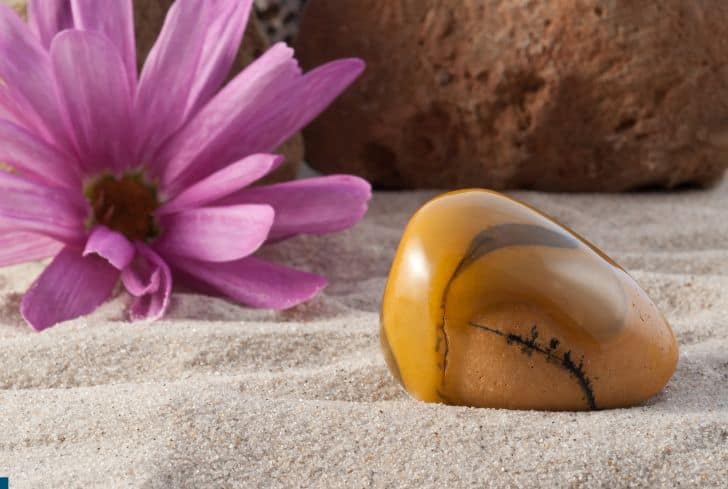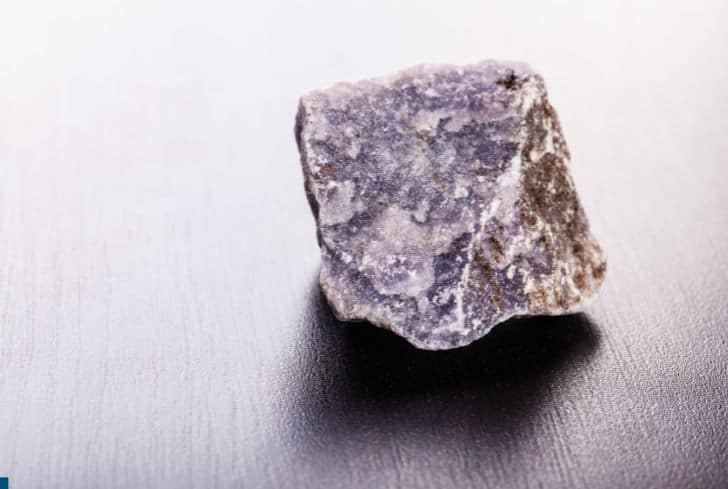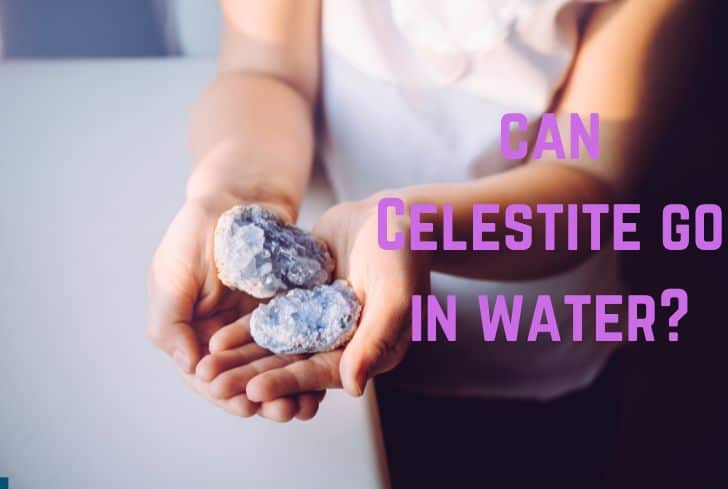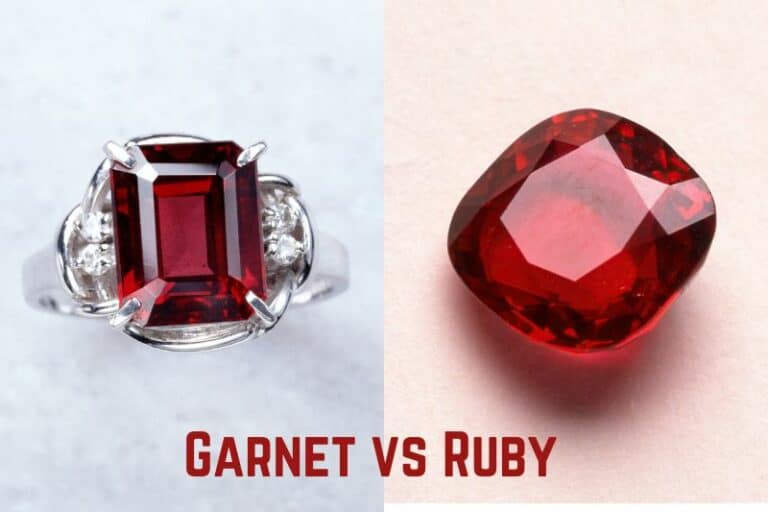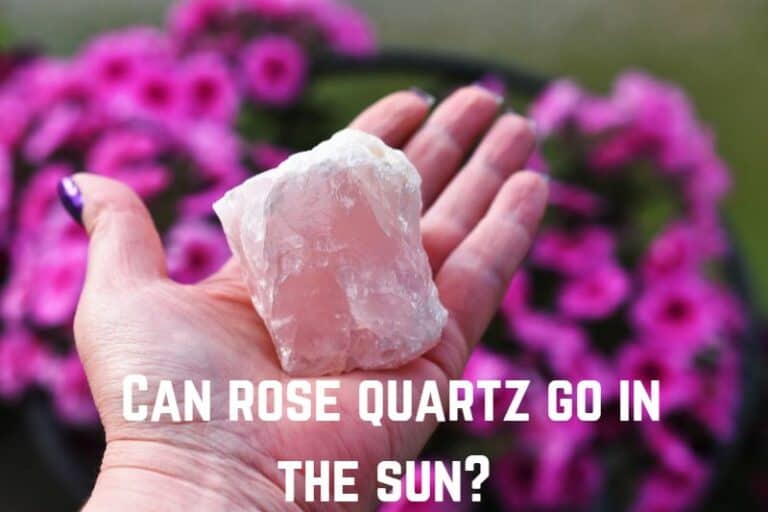Alexandrite vs Amethyst (Properties & Composition)
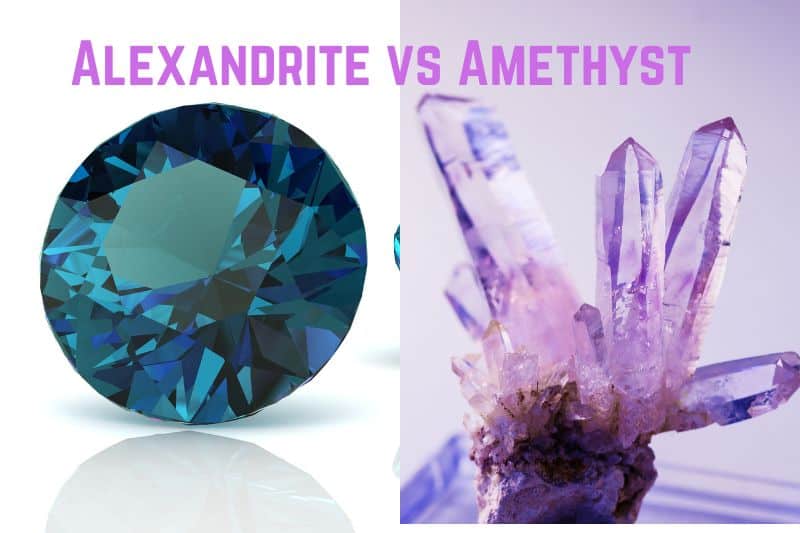
Alexandrite and amethyst are two beautiful gemstones that are widely used in jewelry. The former is often called “emerald by day, ruby by night” by gem lovers due to its unique color-changing property. The latter is also popular for its gorgeous purple color.
The two minerals can often be confused by people. However, they have quite distinct properties, and in this article, we will discuss how you can differentiate between them. We will also talk about their care and uses.
Read: Can Amethyst go in the Water? (And in Salt Water?)
What is Alexandrite?
Alexandrite is a very rare variety of the mineral chrysoberyl. It was originally found in Russia’s Ural Mountains during the 1830s, it continues to be an extremely valuable gemstone due to its beauty and rarity.
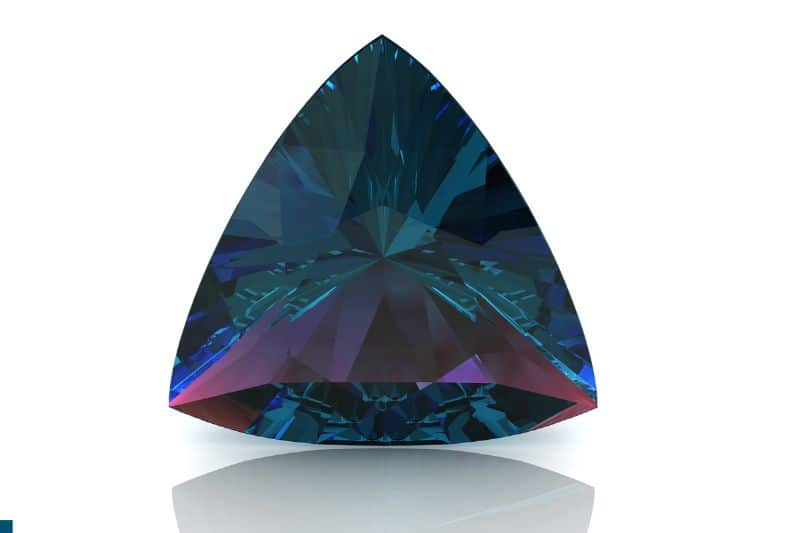
The gemstone is a rare variety of chrysoberyl, having the chemical formula BeAl2O4. It acquires its name from the Russian Czar (emperor) Alexander II, who emancipated the country’s serfs. Alexandrite is often called “emerald by day, ruby by night” because of its unique color-changing property.
The most valued gemstone is that which changes from strong raspberry red (in incandescent light) to bright green (in daylight). However, such perfect specimens are quite rare. The stone has a specific gravity of 3.73 and a hardness of 8.5 on the Mohs Scale: this makes it ideal for jewelry.
What is Amethyst?
Amethyst is a type of quartz, which is the most popular purple gem in the world. Its name comes from the Koine Greek term amethystos, meaning “not intoxicated”—a reference to the belief that the stone protects its owners from feeling drunk.
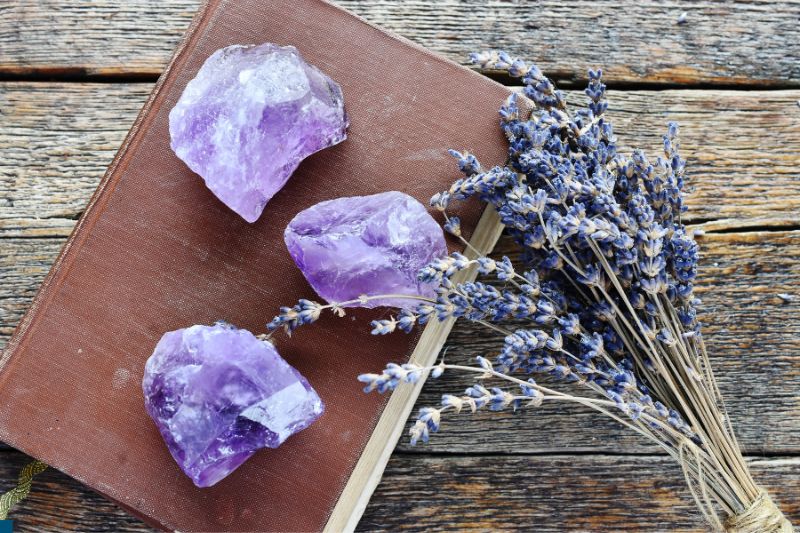
Amethyst is a semi-precious stone that is widely used in jewelry. Being a quartz variant, it is made up of silica (silicon dioxide) and has a trigonal crystal system. The crystals range from transparent to translucent, and they usually have a vitreous luster.
The distinctive purple color of the stone has several causes such as impurities of iron/transition metals, other trace elements, and irradiation. Amethyst is found in igneous, metamorphic, and sedimentary rocks in small quantities all over the world.
Composition
Although Alexandrite and amethyst can be confused, they are actually completely different in their chemical composition. The former is a variety of chrysoberyl, while the latter is a type of quartz.
Alexandrite is a rare variety of chrysoberyl, having the chemical formula of BeAl2O4. It is made up of beryllium and aluminum, which combine with other metals like iron, titanium, and chromium.
Amethyst, on the other hand, is a variety of quartz. It is made up of silicon dioxide, having the formula SiO2. The stone may also contain other minerals such as iron, aluminum, etc., which are often responsible for the distinctive appearance of the stone.
Color
Alexandrite is known for its beautiful color-changing properties; amethyst doesn’t change color but is still popular for its purple color.
The colors of Alexandrite are caused by chromium, which is the same element that causes the red of ruby and the green of emerald. It is sometimes described as “emerald by day, ruby by night,” because of its color-changing property from red to green.
The stone’s color change effect occurs because it transmits green & red light equally; since incandescent & daylight light sources are richer in different wavelengths, the stone appears differently under them. The stronger the color change, the higher the stone’s value.
Amethyst, on the other hand, does not have any color-changing properties. Amethyst is purple, and its hues range from lavender or pale violet to dark purple. It can also exhibit one or both secondary hues of red and blue.
The best quality of Amethyst has a primary purple hue of around 80% mixed with a 20% blue/red hue—it is known as “Deep Siberian”. Another popular variant is called “Rose de France”, which has a light shade of purple, that is similar to lavender.
Size and Hardness
Alexandrite and Amethyst differ in both size and hardness; the former occurs in small amounts while the latter can be found in huge quantities. They are also different in terms of hardness.
Amethyst can occur as enormous specimens, and some can weigh even 200 carats or more. In contrast, Alexandrite is usually found in smaller amounts. The largest Alexandrite weighs less than 70 carats.
The stones also differ in terms of hardness. On the Mohs Hardness Scale, Alexandrite has a value of 8.5. This scale is a way of determining a stone’s hardness by measuring how scratch-resistant it is against other stones.
Amethyst, on the other hand, has a value of 7. Both these stones have a value of over 5.0, meaning that they are safe to go underwater and can be cleaned accordingly. However, since Alexandrite has a higher value, it is more resistant & better for daily wear jewelry.
Pattern and Clarity
Alexandrite and amethyst are quite similar in appearance, which is why they are often confused.
Although their colors are different, Alexandrite and amethyst are almost identical in terms of luster, clarity, and streak. Both stones are glassy with a vitreous luster, which is why they are used so often in jewelry.
Both range from transparent to translucent in terms of diaphaneity. When turned into powder, both stones leave a white streak. Finally, both Alexandrite and amethyst have inclusions due to the presence of other minerals in their composition. However, these inclusions are often not visible when the stones are faceted.
Zodiac Sign & Symbolism
Both Alexandrite and amethyst have important (but different) metaphysical beliefs associated with them.
Alexandrite is the birthstone for June, along with Pearl and Moonstone, and it is cherished by Geminis and Cancers born around that time. It is also popularly used as a gemstone for the 55th wedding anniversary.
This stone is linked to good luck and love. It is believed to enhance intuition and creativity by opening the crown chakra. Alexandrite is also considered good for joy, romance, and finding one’s purpose in life.
Amethyst, on the other hand, is the birthstone for February. So, Aquarius and Pisces favor it, although it is also good for Sagittarius and Scorpio people. Amethyst is believed to improve one’s wisdom and power. It absorbs negative energies and brings peace.
Location
Alexandrite occurs in a handful of locations while amethyst (a type of quartz) is commonly found.
Alexandrite was originally found in the Ural Mountains of Russia during the early 19th century. This area has largely been mined out by now. Smaller deposits are now found in Sri Lanka, Madagascar, China, Brazil, Tasmania, etc.
In contrast, amethyst is a type of quartz, which is one of the most abundant minerals on the planet. It is found almost everywhere, but major deposits exist in Brazil, Siberia, and Uruguay.
Rarity & Pricing
Alexandrite is an extremely rare mineral and is, therefore, quite pricey. Amethyst, on the other hand, is commonly found and is quite affordable.
Alexandrite is a rare color-changing variety of chrysoberyl. It is only found in some deposits present in Sri Lanka, Madagascar, China, etc. This makes it quite an expensive stone. The price of Alexandrite depends on four factors: color, clarity, cut, and carat weight.
The specimens that are green to bluish in daylight and red to purplish red in incandescent light are the most expensive. Good specimens also have fewer inclusions, although in some cases, needle-like inclusions can create a cat’s-eye effect.
Gem-grade natural Alexandrite costs between $8,000 to $15,000 per carat. The price rises even more dramatically for larger stones.
Amethyst, on the other hand, is commonly found. It has a huge range of pricing; it can range from a few pennies to about $120 per carat. More valuable types, such as the Siberian Amethyst can cost more.
Care
Since both Alexandrite and amethyst have a value of 5.0 on the Mohs Hardness Scale, we can use water to clean them.
Follow these steps to clean either of the stones:
- Mix a soft detergent/soap with lukewarm water.
- Immerse the stone in it for a few minutes, cleaning the crevices with a soft brush.
- Rinse the stone under running water and ensure that no excess soap remains.
- Let the stone air dry. Make sure you flip it a few times to get all water out of the crevices.
Do not use acid treatments or mechanical systems for cleaning them. Abrupt temperature changes and prolonged exposure to light/heat are also dangerous for both these stones. Otherwise, they can lose their color or become brittle.
If you are using the stone for metaphysical purposes, make sure you cleanse and recharge the stone at least once a month. You can cleanse them with sound, clear quartz, or by using smoke. You can also bury them in brown rice or recharge them with moonlight
Read: Garnet vs Ruby (Properties & Composition)
Uses
The uses of Alexandrite and amethyst are:
- Jewelry: Both Alexandrite and amethyst are widely used in jewelry thanks to their gorgeous appearance and good level of hardness.
- Cultural value: In earlier times, amethyst was valued by the Greeks as a strong antidote against drunkenness. It is also considered sacred by Tibetans, who use it to make prayer beads.
- Spiritual Purposes: The stones are also used for metaphysical reasons, for bringing good fortune, and for improving one’s wisdom.
Conclusion
In this article, we have discussed two popular gemstones: Alexandrite and amethyst. We did a comparative analysis of their properties, such as color, hardness, price, etc. We also discussed their various uses and how to take care of them.


